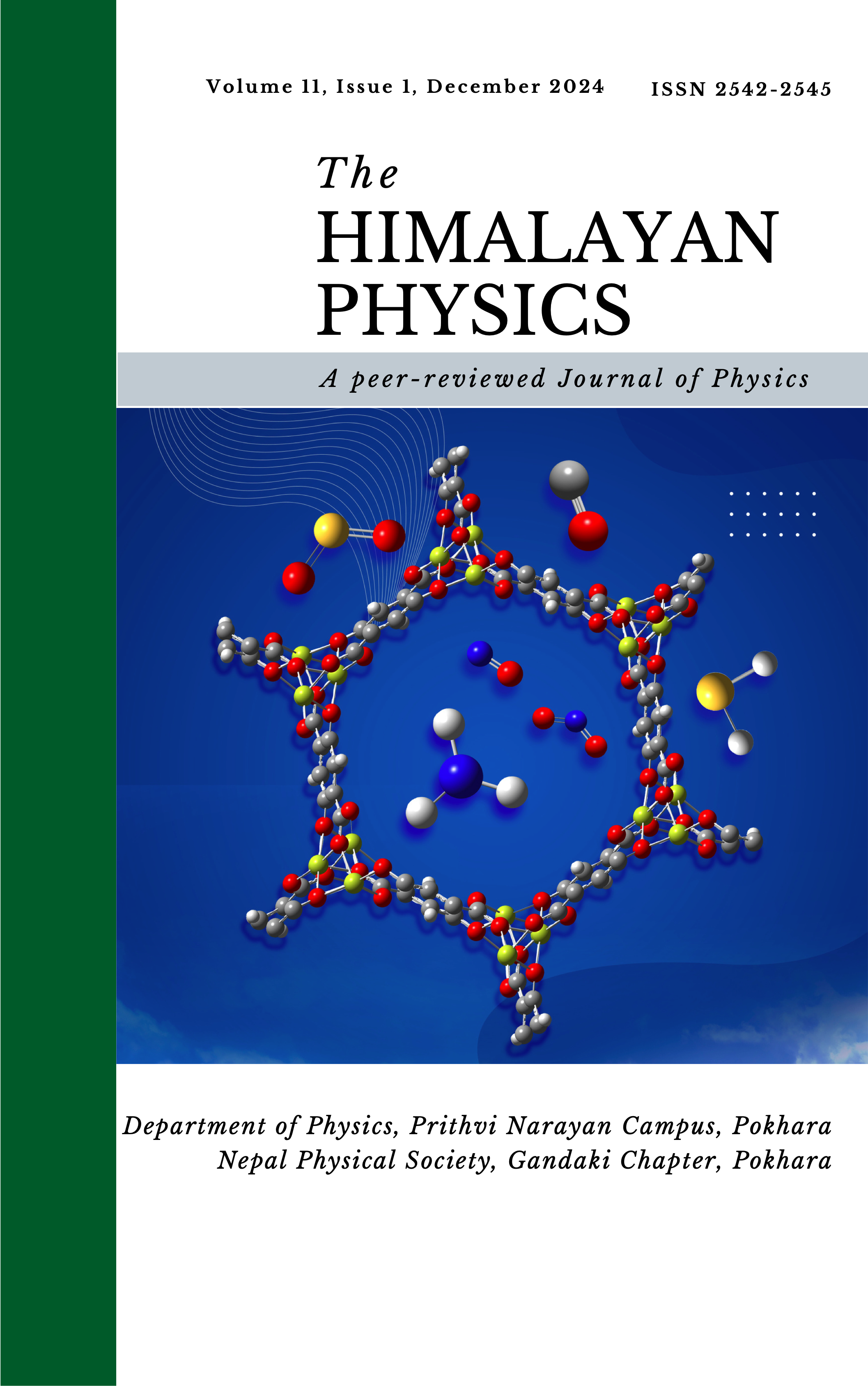First-Principles DFT Study of the Molecular Structure, Spectroscopic Analysis, Electronic Structures and Thermodynamic Properties of Ascorbic Acid
DOI:
https://doi.org/10.3126/hp.v11i1.65329Abstract
We present an analysis of the optimized geometry, vibrational spectroscopic frequencies, highest occupied molecular orbital (HOMO) and lowest unoccupied molecular orbital (LUMO) energy gap, global reactivity parameters, molecular electrostatic potential (MEP), electrostatic potential (ESP), electronic density (ED), density of states (DOS), Mulliken charges and thermodynamic properties of Ascorbic acid (C6H8O6) using the density functional theory (DFT) with B3LYP/6-311G(d,p) basis set. Various vibrational modes including C-C and C-H stretching vibrations were observed and identified. Along with these, in-plane C-H bending vibrations were also detected within the range of 3000-3100 cm-1. Analysis of the calculated HOMO and LUMO energies revealing insights into its chemical stability and reactivity and inform significant charge transfer phenomenon with an energy gap of 5.6545 eV between them within the molecule. The DOS spectrum provided additional clarity on the energy levels of orbitals, complementing with our HOMO-LUMO analysis. The global reactivity parameters i.e. hardness, chemical potential, electronegativity, chemical softness and electrophilicity index were determined to be 2.8272 eV, -3.9892 eV, 3.9892 eV, 0.3481 eV⁻¹ and 2.8143 eV respectively suggesting valuable information on its chemical reactivity and interaction potential. Visualizations of ESP, MEP and ED offered a deeper understanding of its molecular interactions and charge distribution. The Mulliken charges analysis indicated that most of the carbon atoms except C10 and all the hydrogen atoms show positive charge while all the oxygen atoms together with C10 show the negative charges emphasizing key regions of positive and negative charge localization. Among them, C1 and O8 atoms have the highest positive and negative charges respectively. Heat capacities at constant volume and at constant pressure, internal energy, enthalpy and entropy were observed to increase with rise in temperature contrasting with the trend observed for Gibbs free energy providing insights into the molecule's behavior under different temperature.
Downloads
Downloads
Published
How to Cite
Issue
Section
License
Copyright (c) 2024 Himalayan Physics

This work is licensed under a Creative Commons Attribution-NonCommercial 4.0 International License.
This license enables reusers to distribute, remix, adapt, and build upon the material in any medium or format for noncommercial purposes only, and only so long as attribution is given to the creator. If you remix, adapt, or build upon the material, you must license the modified material under identical terms.




